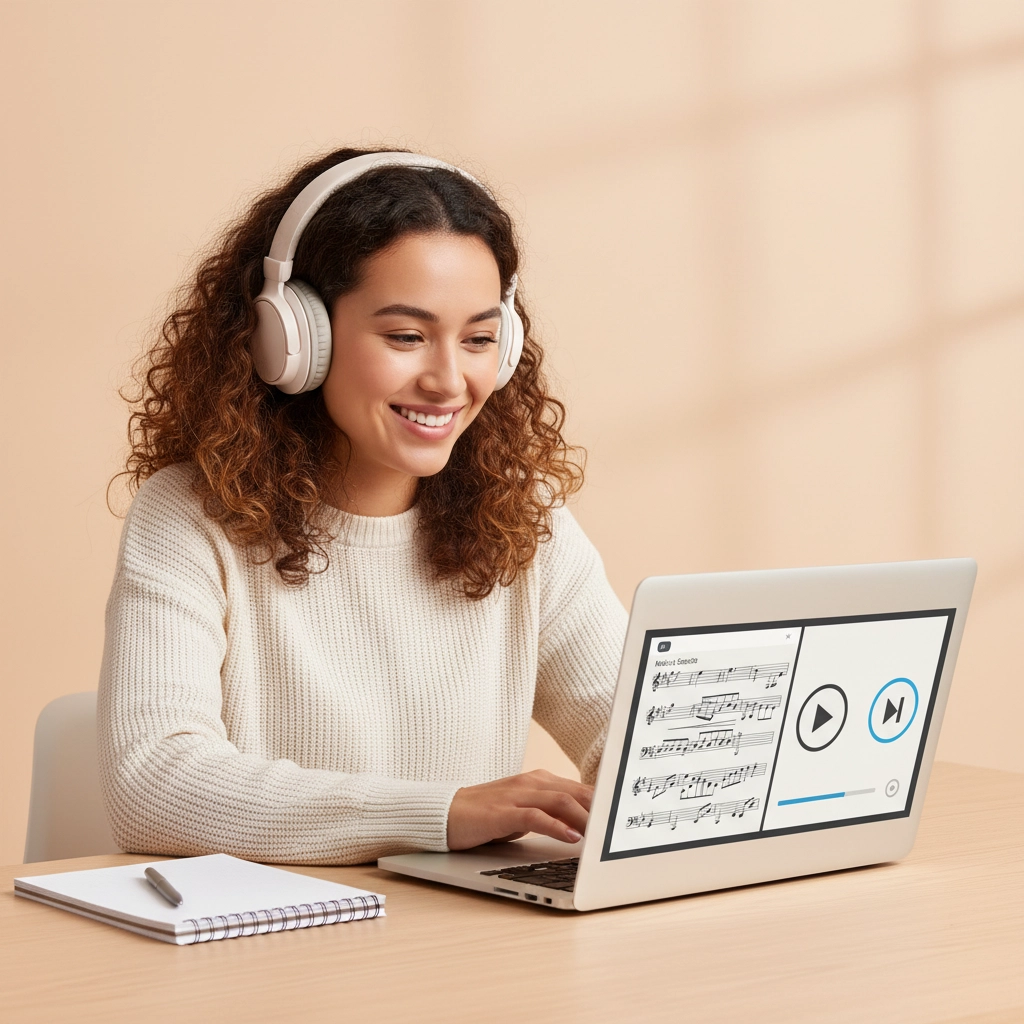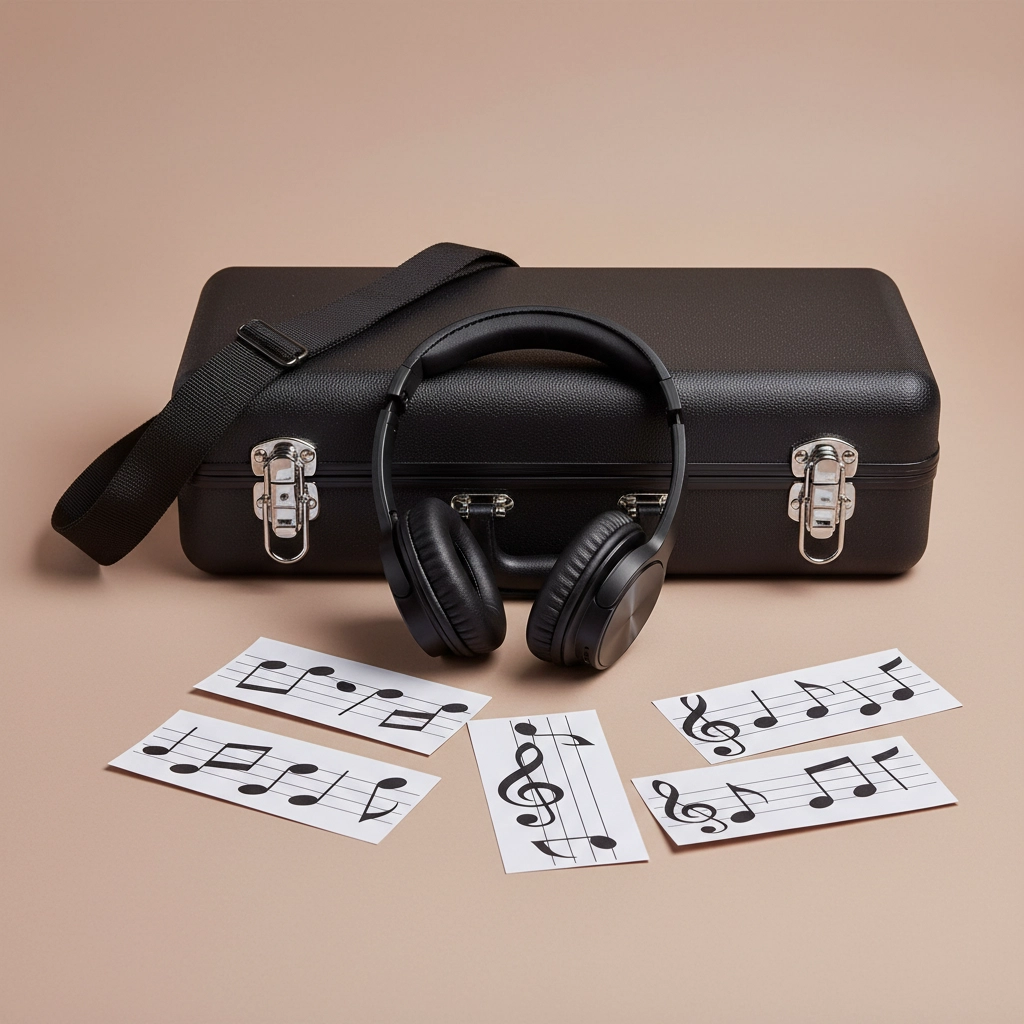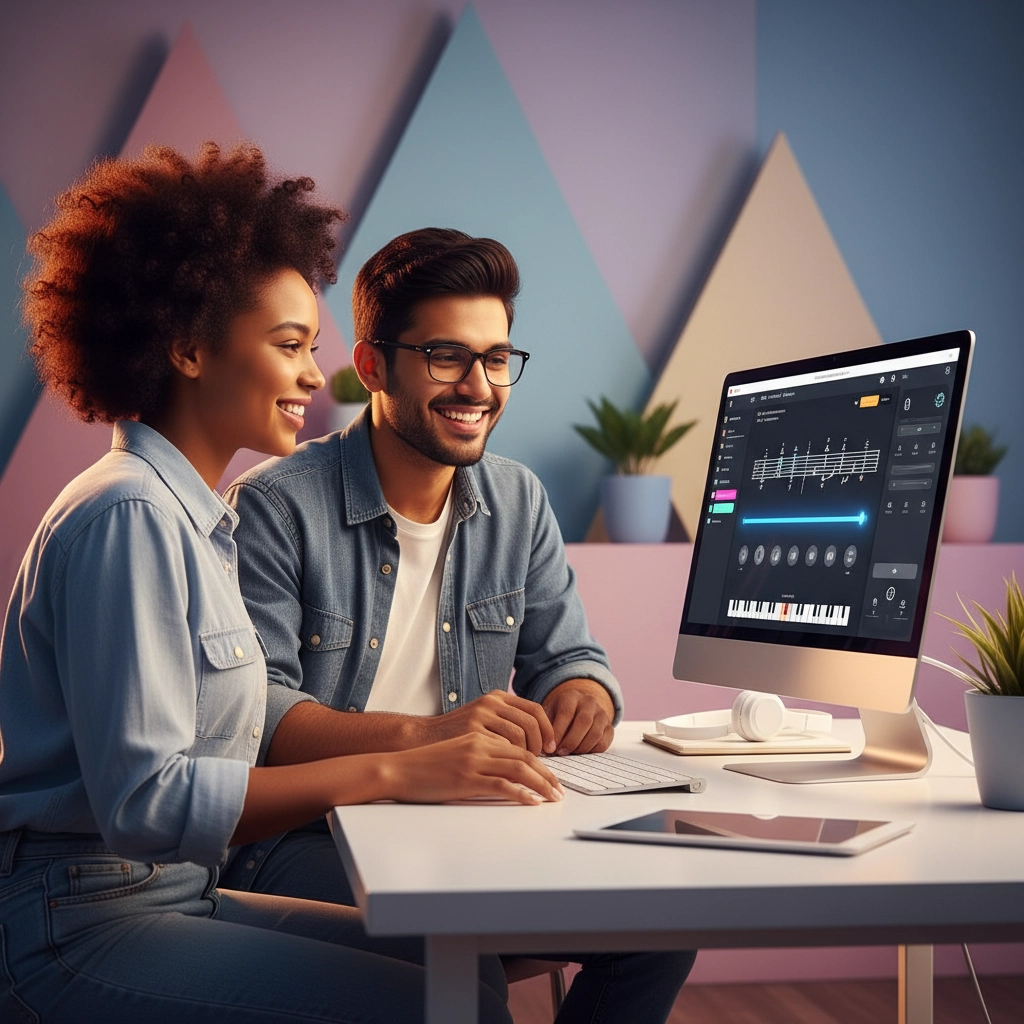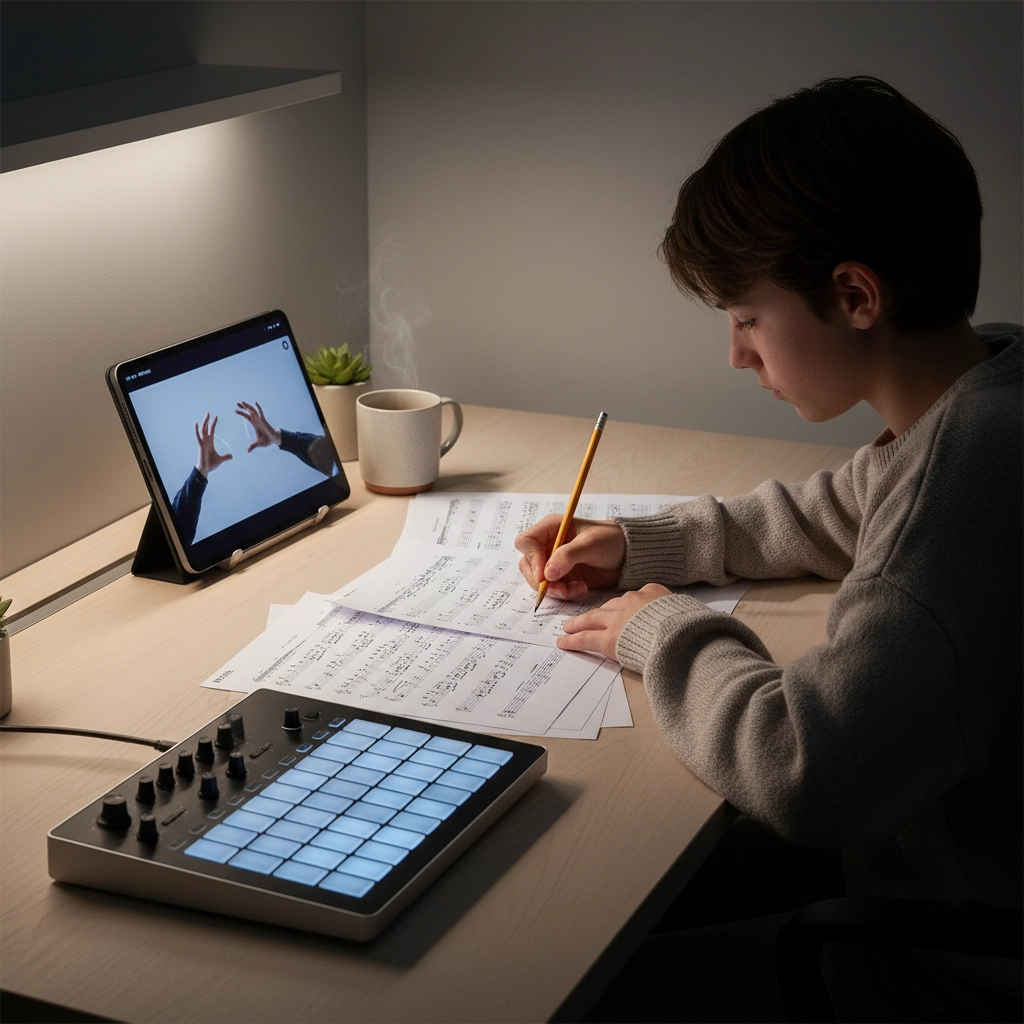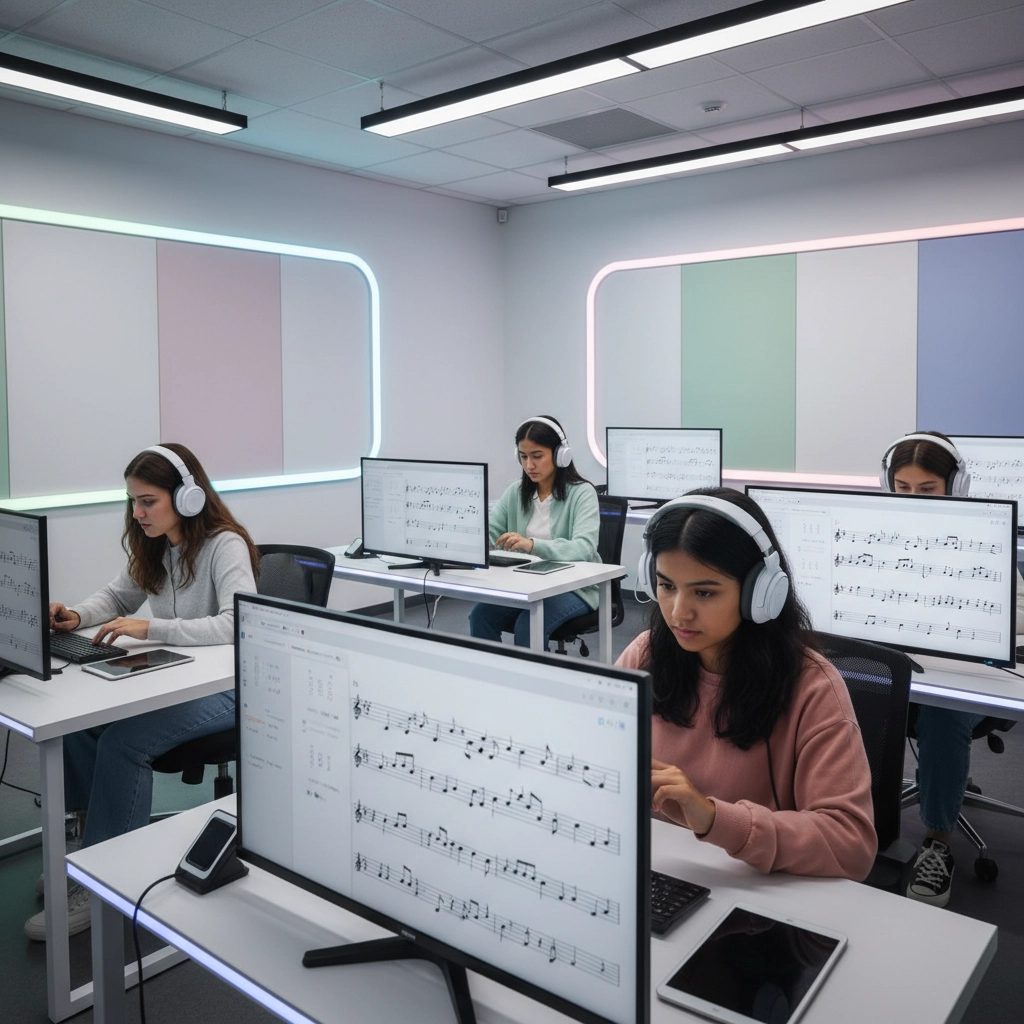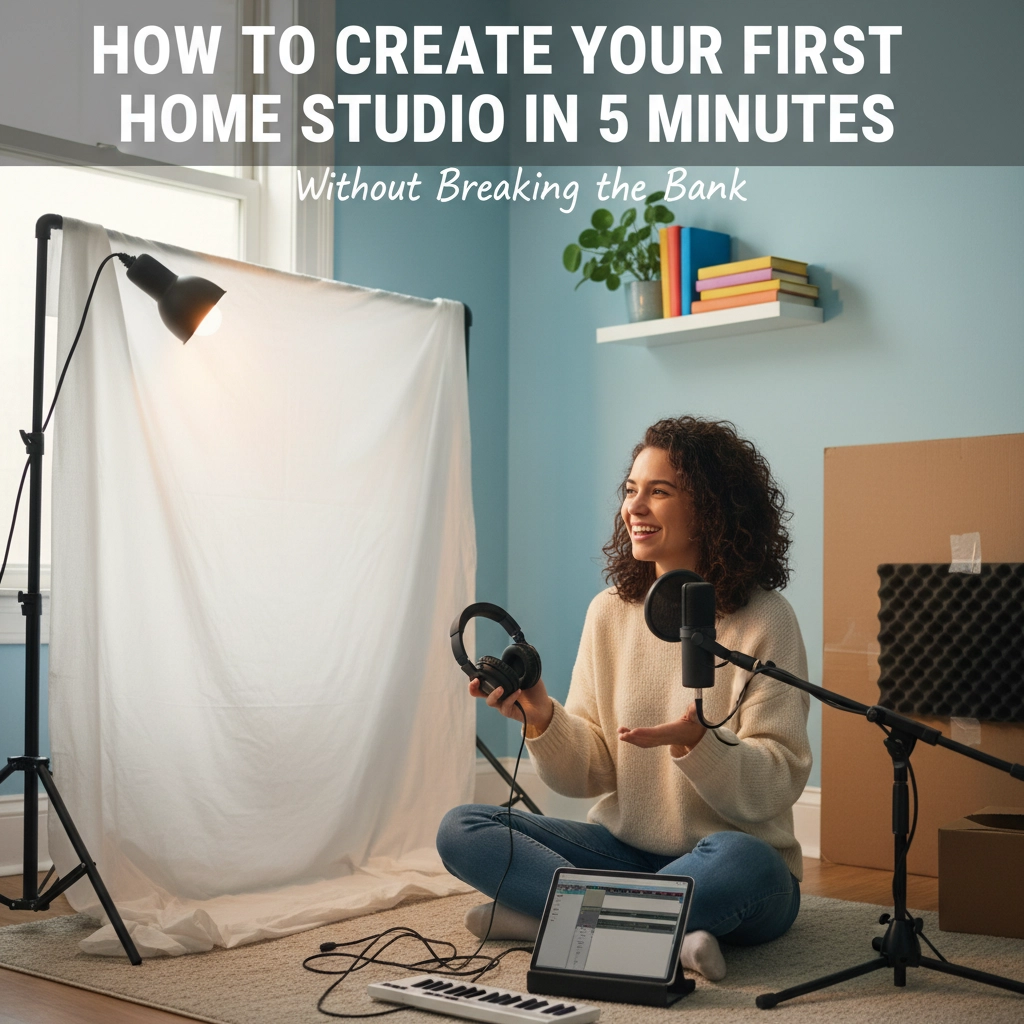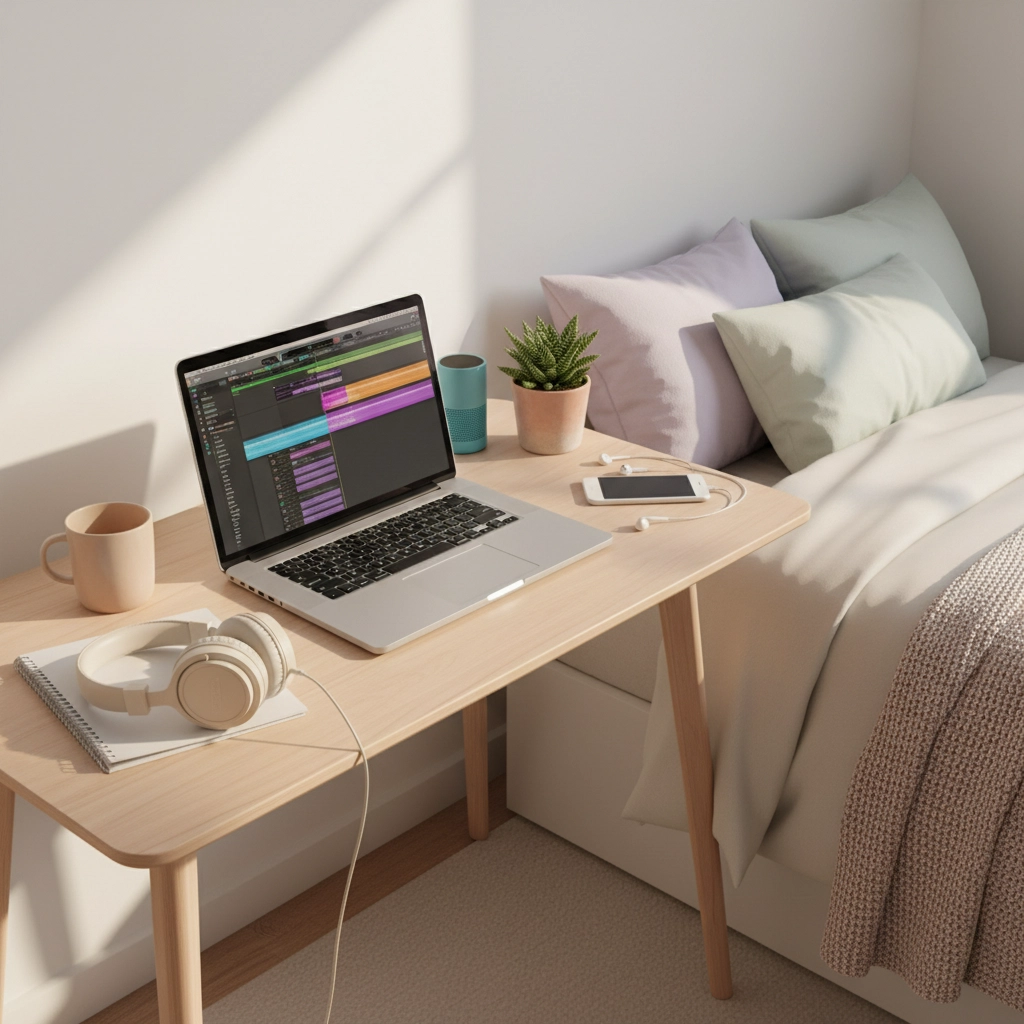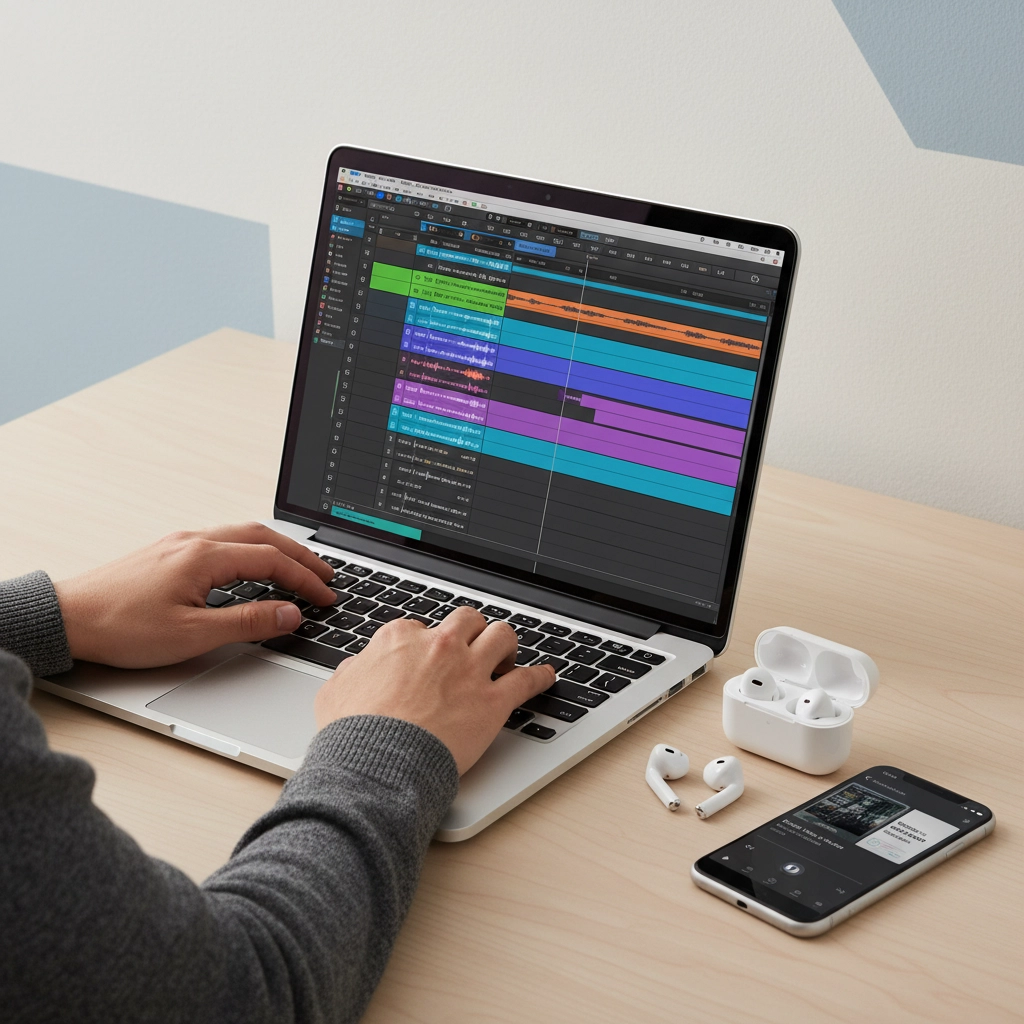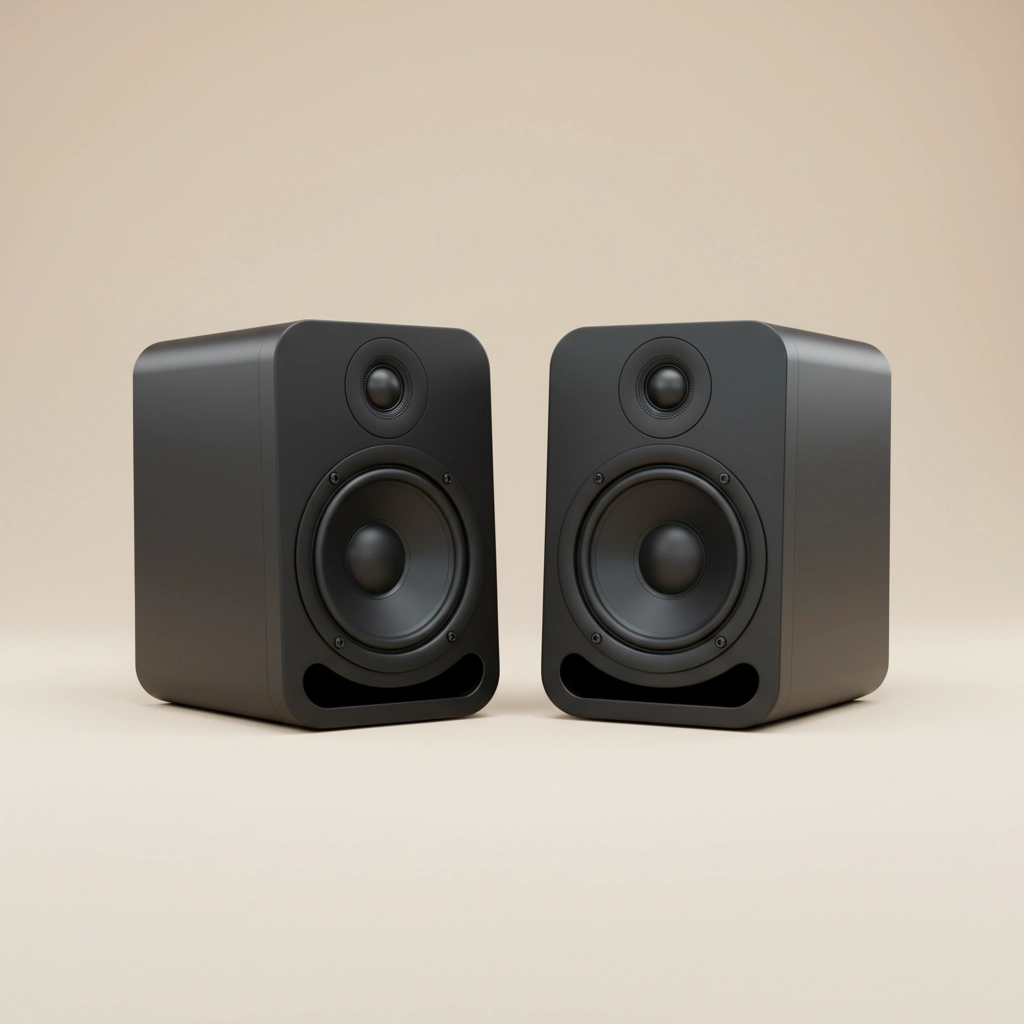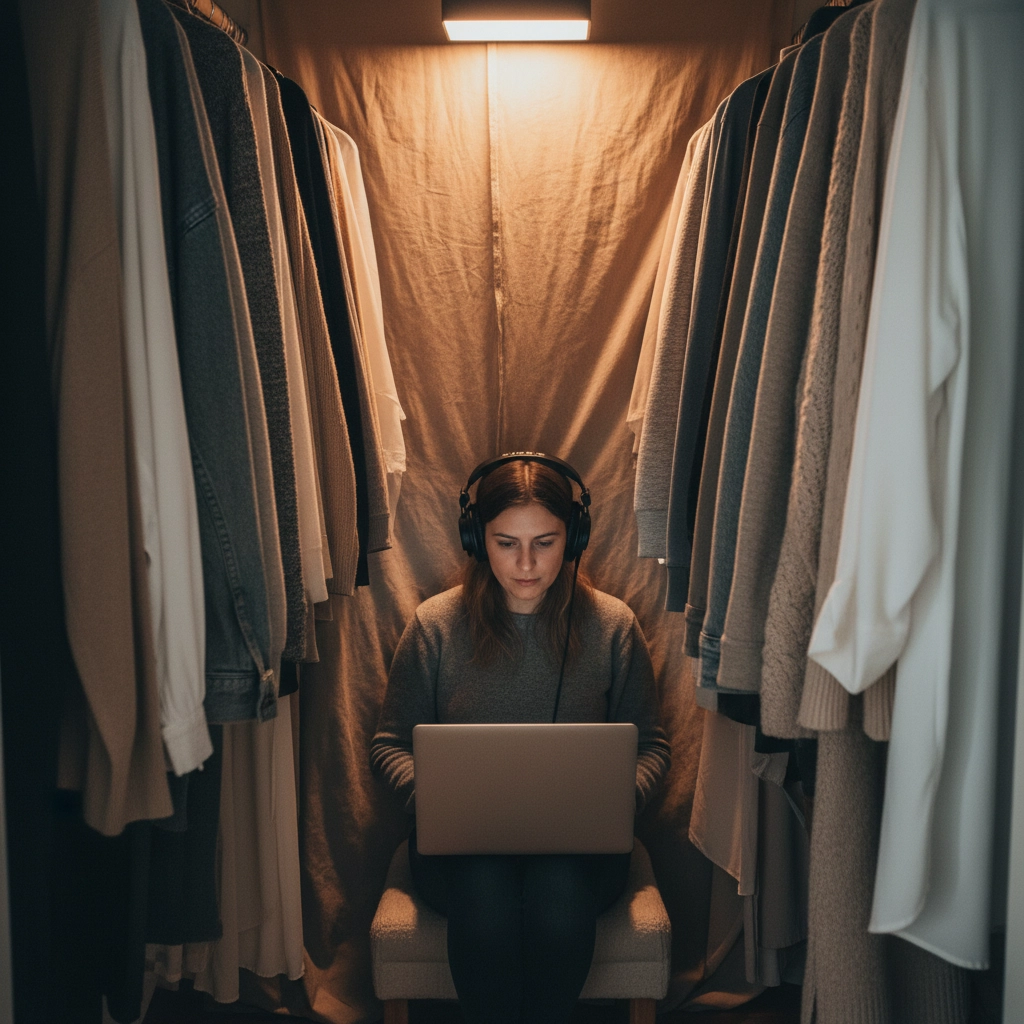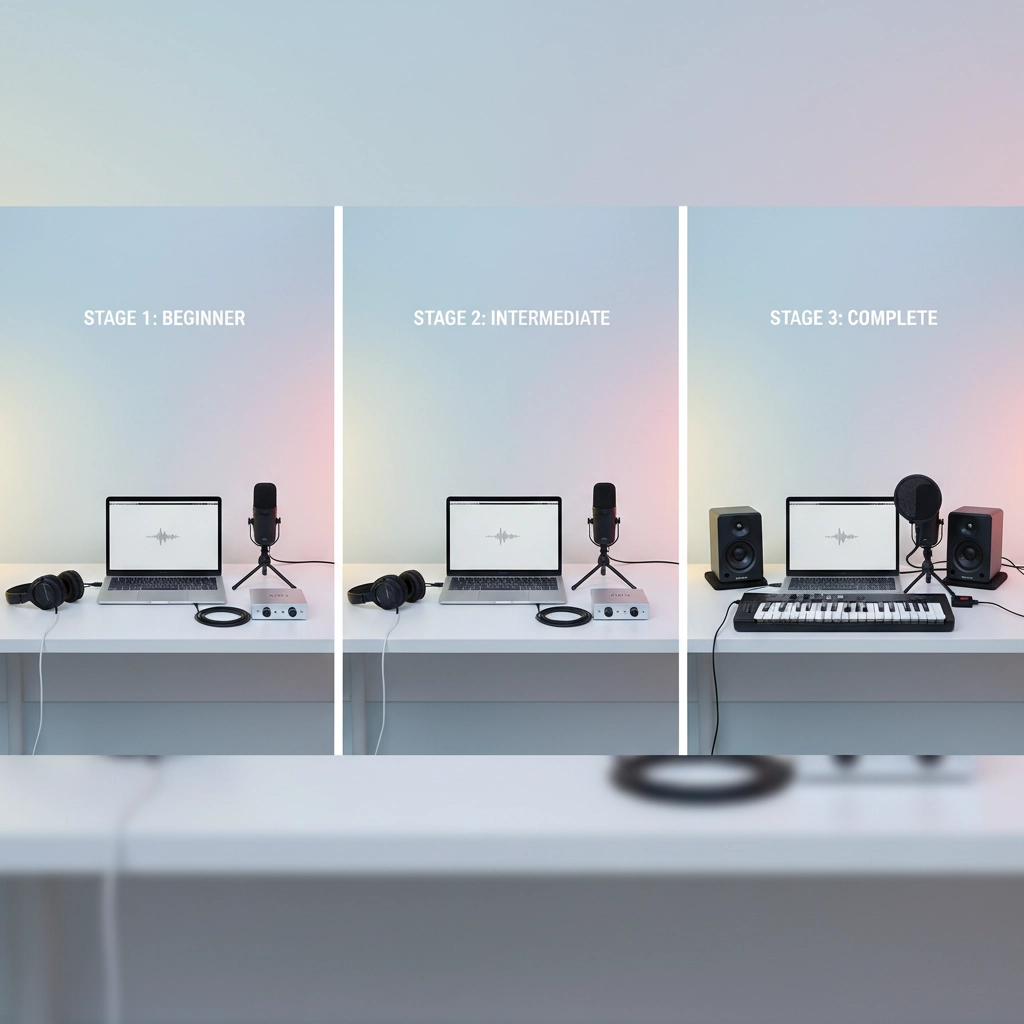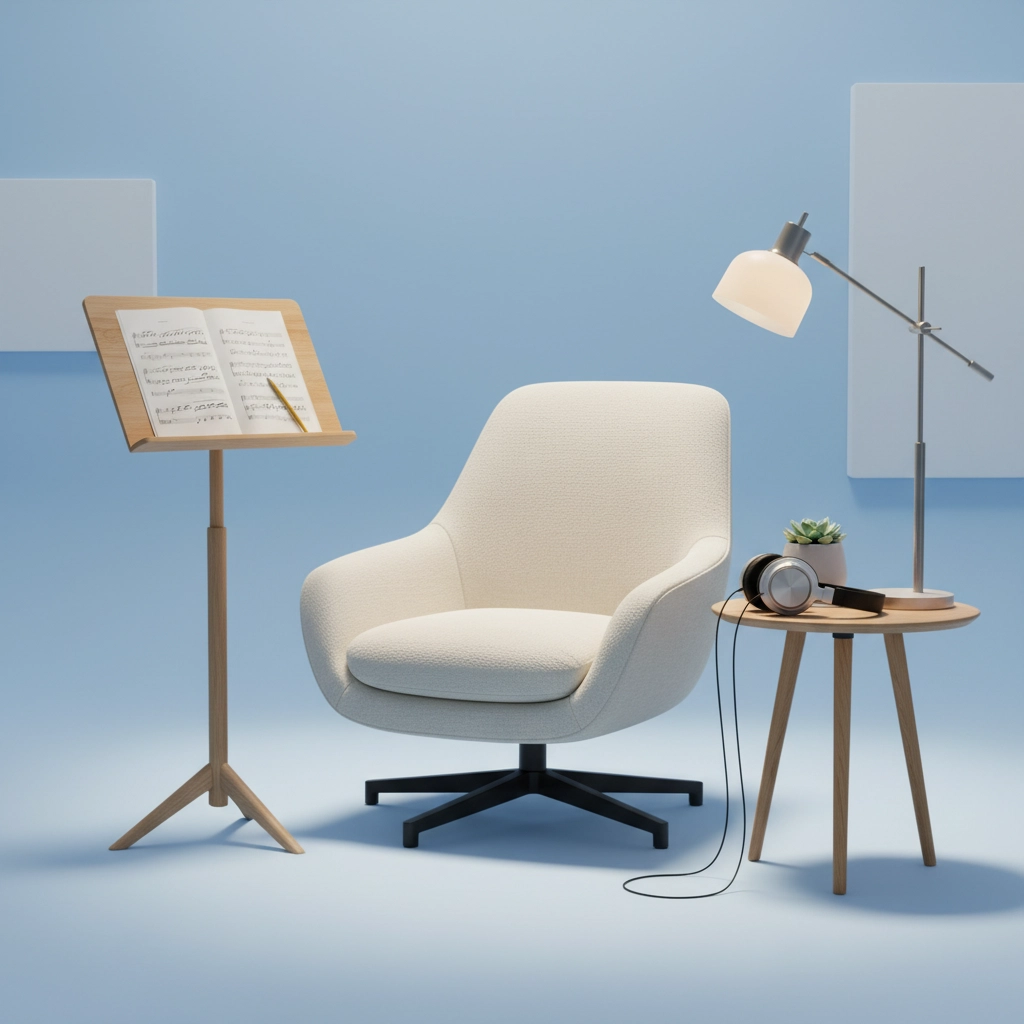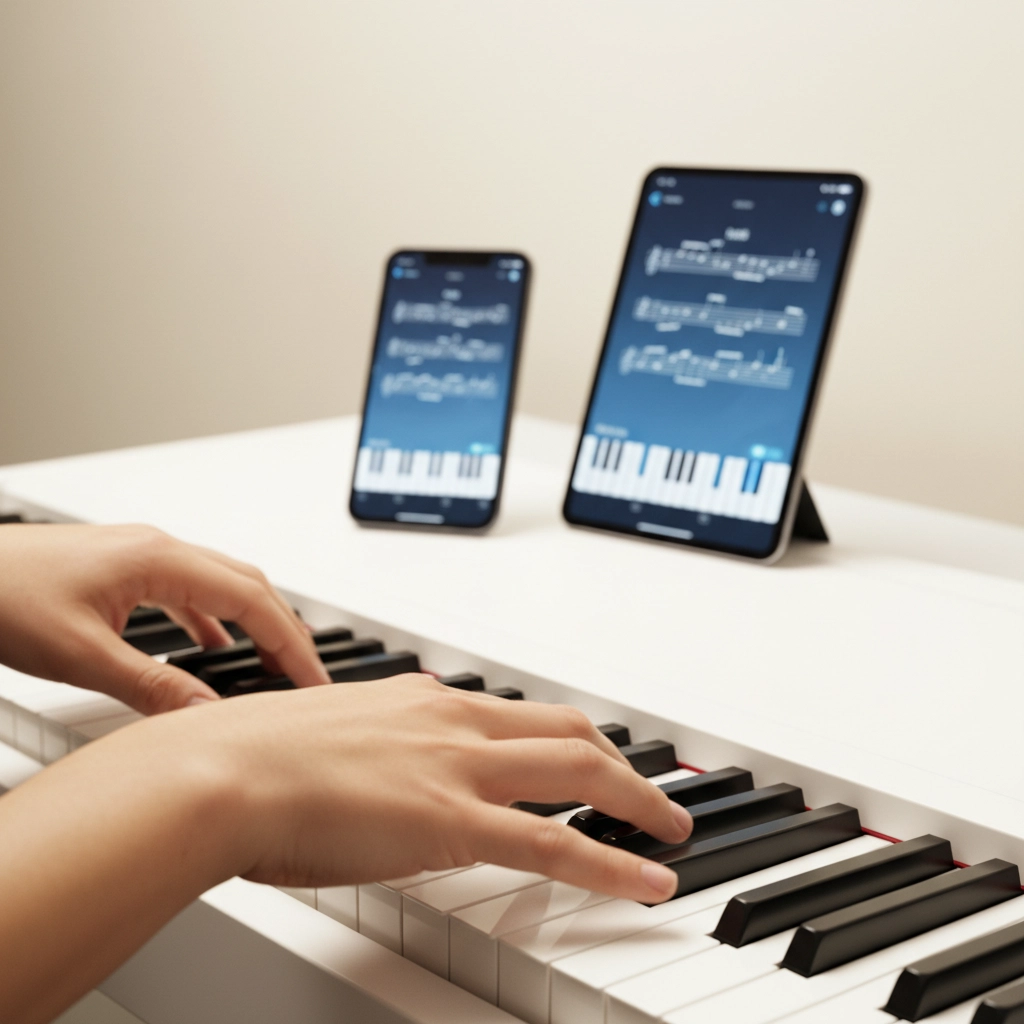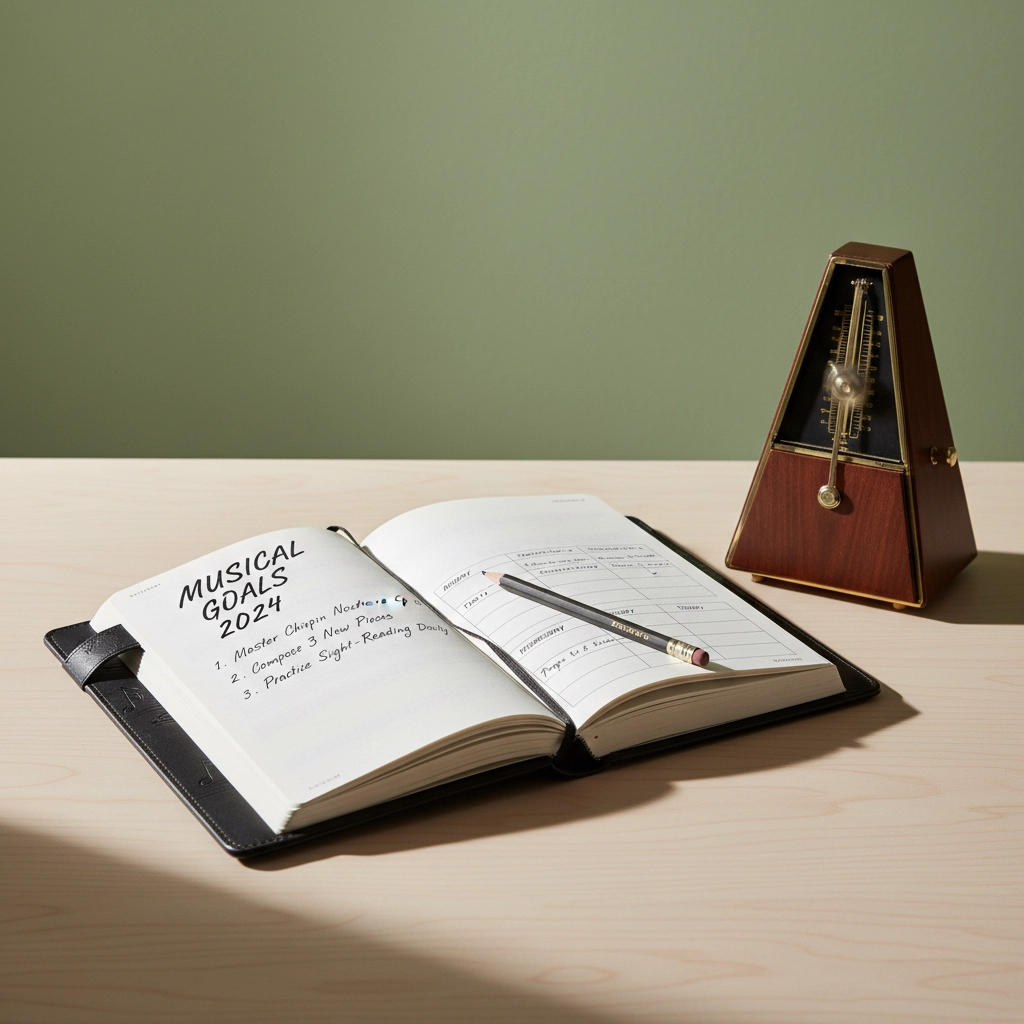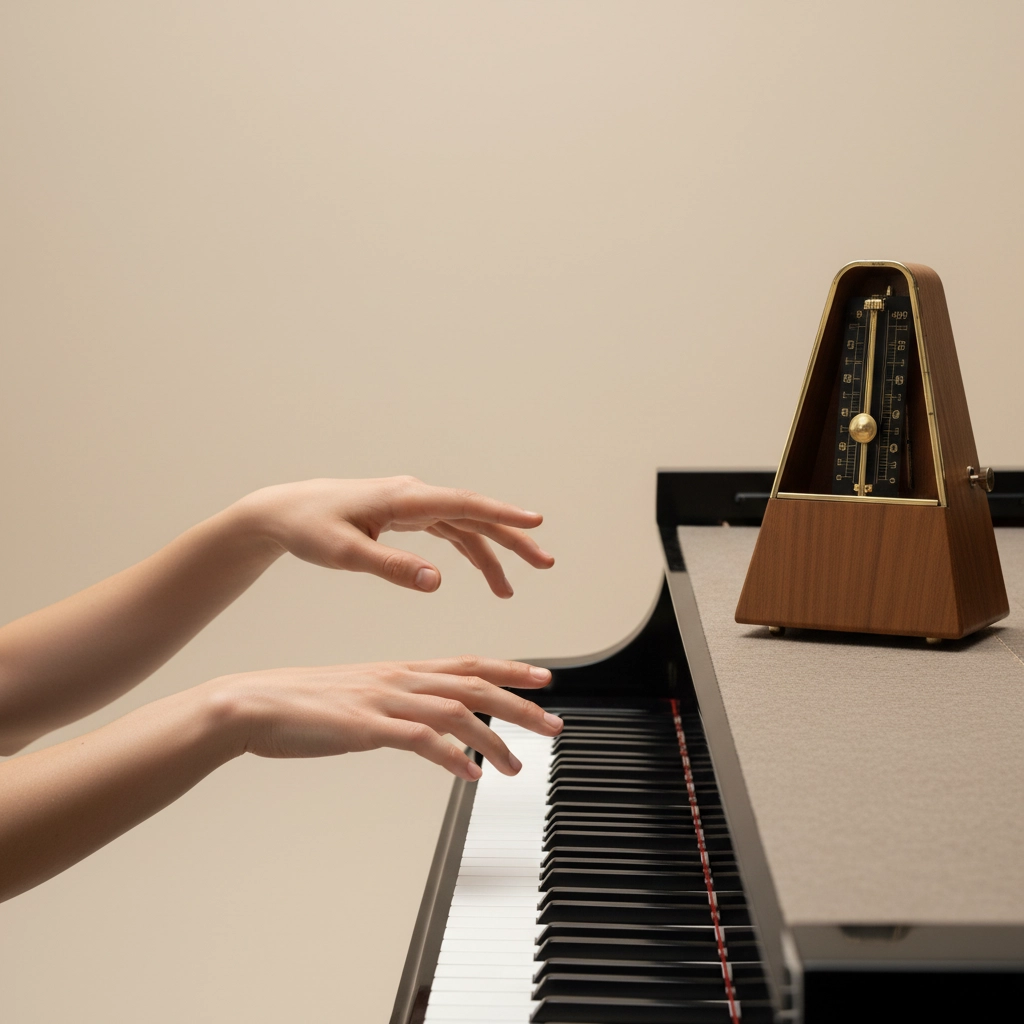The (Beginner-Friendly) Musician’s Guide to Learning at Home Without Losing Your Motivation
Hey there, fellow music lovers!
Let's be real for a second – learning music at home can feel like a rollercoaster. One day you're on fire, nailing that tricky chord progression, and the next day your piano is collecting dust in the corner while you scroll through Netflix. I've been there, and trust me, you're not alone in this struggle.
When I first started building my online music community, I heard the same story over and over: "I was so motivated at the beginning, but now..." Sound familiar? The thing is, home learning comes with its own unique set of challenges that nobody really talks about. No teacher showing up at your door, no classmates to keep you accountable, and definitely no judgment-free zone when you hit a wall.
But here's what I've learned from working with musicians just like you – motivation isn't something that just happens to you. It's something you can actually create and maintain. Let me share some game-changing strategies that have helped countless home learners fall back in love with their practice.
Start With Goals That Actually Excite You
Okay, I know "set goals" sounds like the most boring advice ever, but hear me out. The problem isn't that people don't set goals – it's that they set the wrong kinds of goals.
Instead of vague aspirations like "get better at piano," try something that makes you genuinely excited to pick up your instrument. Maybe it's learning that song that always gives you chills, or being able to improvise over your favorite jazz standard.
Break it down into bite-sized pieces too. If you want to learn a complex piece, start with just the first 8 bars. When you can play those smoothly, move to the next section. Every small win builds momentum, and momentum is what keeps you coming back for more.
I remember when one of my community members wanted to learn piano. Instead of starting with scales (yawn), she chose to learn the theme from her favorite movie. Three months later, she was not only playing it beautifully but had moved on to more challenging pieces. The key? She started with something that connected to her heart, not just her brain.
Create Your Sacred Music Space
Your environment plays a huge role in your motivation. You don't need a fancy studio – just a dedicated spot that says "music happens here."
Clear away the clutter, make sure your instrument is easily accessible (not buried under a pile of laundry), and maybe add a plant or some inspiring artwork. When your space feels intentional, your practice feels intentional too.
And here's a pro tip: leave your instrument out. I can't tell you how many people have told me that simply keeping their piano nearby and ready to play, instead of having to travel or keeping their practice space messy doubled their practice time. The easier it is to grab and play, the more likely you'll actually do it.
Ride Out the Motivation Dips (They're Normal!)
Let's talk about those days when your instrument might as well be a piece of furniture. You know what I mean – you walk past it twenty times but can't bring yourself to play a single note.
First off, this is completely normal. Every musician experiences this, from beginners to pros. The difference is in how you handle it.
On low-motivation days, lower the bar. Instead of your usual 30-minute practice, commit to playing just one song. Or even just tuning your instrument. Often, once you start, you'll find yourself playing longer than planned. But if you don't? That's okay too. You still maintained the habit, and that's what matters most.
Another trick that works wonders: revisit what inspired you to start playing in the first place. Put on your favorite album, watch a live performance that gives you goosebumps, or remember that moment when you first heard the song you desperately wanted to play. Sometimes you just need to reconnect with your "why."
Find Your People (Yes, Even From Home)
Music is meant to be shared, and isolation can kill motivation faster than anything else. The good news? You don't have to be physically in the same room to connect with fellow musicians.
Join online communities, participate in virtual jam sessions, or simply share recordings with friends. Having people who understand your musical journey makes all the difference. They celebrate your wins, encourage you through tough spots, and remind you that you're part of something bigger.
In my Journey Online community, some of the strongest friendships have formed between members who've never met in person but bonded over late-night practice sessions and shared musical breakthroughs. Connection is connection, regardless of the medium.
Embrace the Tech (It's Your Friend)
Gone are the days when learning music meant just you, your instrument, and a dusty old method book. Today's technology can be your secret weapon for staying motivated.
Try different apps for backing tracks, use your phone to record yourself playing (you'll be amazed at how much you learn from listening back), or explore online platforms that gamify your learning experience. The key is finding tools that enhance your practice, not complicate it.
I've seen students completely transform their practice routine by incorporating simple recording apps. Suddenly, they could hear their progress objectively, which motivated them to keep pushing forward. Plus, having recordings to share with others creates natural accountability.
Celebrate the Small Stuff
Here's something most people get wrong about learning music at home: they wait for big milestones to feel good about their progress. Don't do this to yourself.
Celebrate everything. Learned a new chord? That's worth acknowledging. Played through a song without stopping? Victory dance time. Had a practice session when you really didn't want to? You're officially a rockstar.
Keep a simple practice journal or voice notes on your phone. Record what you worked on and how it felt. On tough days, flip back through these entries and remind yourself how far you've come. Progress isn't always linear, but it's always happening.
Keep It Fresh and Fun
Boredom is motivation's worst enemy. If you find yourself going through the motions, it's time to shake things up.
Explore different genres, even if they're outside your comfort zone. Classical player? Try some blues. R&B pianist? Dabble in folk fingerpicking. Each new style teaches you something and keeps your musical curiosity alive.
Set yourself fun challenges: learn a song in a week, try writing your own melody, or attempt to play something by ear. The goal isn't perfection – it's engagement and growth.
Remember: You're Not Alone in This
Learning music at home takes guts. You're choosing to invest in yourself, to push through frustration, and to create beauty in your own space. That's pretty amazing when you think about it.
There will be days when you feel like you're not progressing fast enough, when that piece seems impossible, or when you wonder if you're too old/young/busy to really get good at this. In those moments, remember that every professional musician has felt exactly the same way.
The difference isn't talent or natural ability – it's showing up consistently and being kind to yourself in the process. Your musical journey is uniquely yours, and it deserves respect and patience.
Your home practice space is more than just a room – it's where dreams take shape, where frustration transforms into breakthrough, and where you prove to yourself that you can do hard things. Keep going, keep playing, and keep believing in the musician you're becoming.
The music world needs what you have to offer, even if you can't see it yet. Trust the process, embrace the journey, and remember – I'm cheering you on every step of the way.
❤️ - L
Online Piano Learning for Beginners: Your Simple Starter Guide
It all begins with an idea.
How to Create Your First Home Studio in 5 Minutes (Without Breaking the Bank)
It all begins with an idea.
7 Mistakes You’re Making with Online Music Learning (and How to Fix Them)
Let me guess, you've jumped into online music learning with all the excitement in the world, maybe even bookmarked a dozen YouTube tutorials and downloaded a few apps. But somewhere along…
It all begins with an idea. Maybe you want to launch a business. Maybe you want to turn a hobby into something more. Or maybe you have a creative project to share with the world. Whatever it is, the way you tell your story online can make all the difference.
Don’t worry about sounding professional. Sound like you. There are over 1.5 billion websites out there, but your story is what’s going to separate this one from the rest. If you read the words back and don’t hear your own voice in your head, that’s a good sign you still have more work to do.
Be clear, be confident and don’t overthink it. The beauty of your story is that it’s going to continue to evolve and your site can evolve with it. Your goal should be to make it feel right for right now. Later will take care of itself. It always does.


